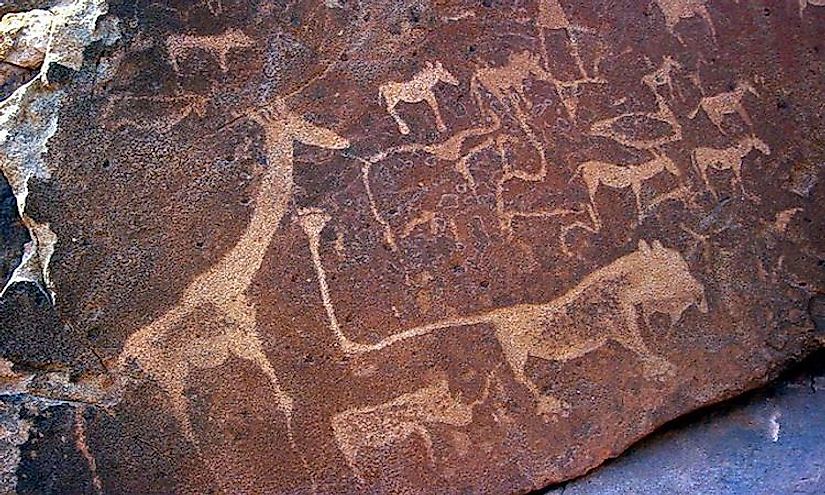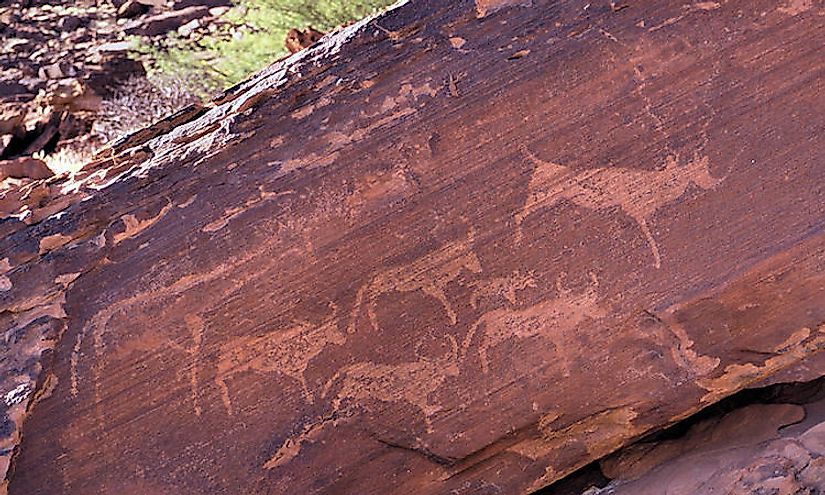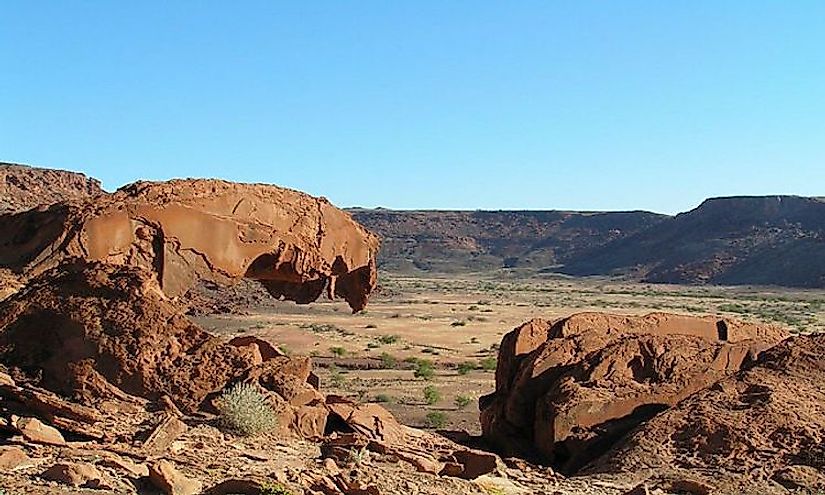Twyfelfontein Rock Engravings Of Namibia

Twyfelfontein’s fascinating Late Stone Age petroglyphs depict native fauna and hunter-gatherer activities from the era. The region was listed by UNESCO as a world heritage site in 2007, recognized for its extensive engravings which portray the way of life of hunter-gatherer communities. The rock site has been a national monument since 1952 and is home to numerous iconic engravings.
5. Description and History -
The Twyfelfontein site houses the largest concentration of hunter-gatherer rock engravings in the whole of Africa. The region is situated in north-western Namibia, in an area known as Kunene. A series of over 2,500 engravings are carved on more than 200 sandstone blocks found in the area. The engravings date back 6,000 years ago when hunter-gatherer communities settled in the region. The Khoikhoi nomads were the second group to occupy the area, and the petroglyphs depict the animals they kept and hunted. Depictions of zebras, human beings, elephants, antelopes, ostrich, and giraffes are some of the standard symbols. The engravings played a significant role in the religious activities of the Bushmen as they served as records of ritual practices. The hunter-gatherers visibly believed in the spiritual qualities of some animals in relation to water availability. Animals such as springbok, wildebeest, and the elephant were respected for their ability to find and conserve water.
4. Research, Tourism, and Education -

The rock site has been invaluable in gaining insight into the way of life of the hunter-gatherer communities. The engravings exhibit various elements of the religious and economic aspects of the Bushmen who inhabited southern Africa before the occupation of colonialists and Damara herders. Nearly 40,000 people visit the site annually as it has the most significant collection of rock engravings in the African continent.
3. Archaeological Uniqueness -
The sandstone in the area has high iron content, which when oxidized results in a rigid red crust. The rock artists incised this upper layer with the aid of tools carved from harder rock and exposed the yellow underlying rock. The engravings were also oxidized over time and were thus protected from environmental elements. As a result, the artwork has survived over centuries. The engravings act as a kaleidoscope into the lives of the Bushmen. Archaeological remains excavated in the site include bones, stone tools, pottery, beads, and charcoal.
2. Natural Surroundings, Sights, and Sounds -

The rock art site is situated in the Huab River Valley, which is flanked by sandstone cliffs. A spring named Twyfelfontein, fed by an underground aquifer, is the primary source of water in the valley. The site sits in a transitional zone between shrubland, desert and savanna habitats. The valley is home to populations of the highly adapted desert elephant, springbok, oryx, cheetah, and giraffe.
1. Threats and Conservation Efforts -
Rock art is susceptible to environmental elements and tourism impacts, as proven in the Twyfelfontein rock art site. The area is legally protected in Namibia as a nature reserve. An additional buffer zone stretching 35.5 square miles protects against human encroachment and unauthorized tourism. Tourism in the region is closely monitored and managed. Visitor management has been further enhanced in the area, where officials accompany tourists as they experience the engravings to minimize the tourism impact. The integrity of the rock site remains intact and well preserved.











